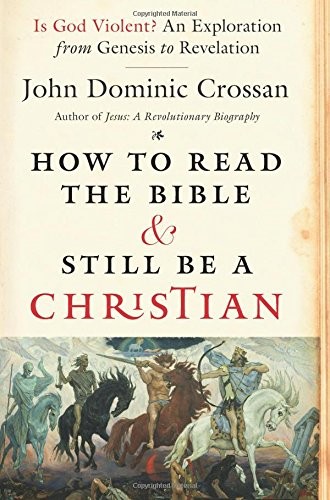Lessons from John Dominic Crossan
The kingdom of God is here, and we're called to participate in resurrection.
Look, it’s the Washington Island leopard,” Dom Crossan exclaimed with good humor one day last week as my six-year-old daughter crawled into the hotel’s dining room underneath her leopard-print fleece blanket. Later I saw the two of them sitting on the couch, comparing iPads. It’s probably good that they didn’t discuss theology, though. I imagine my daughter has a much higher Christology than Crossan does, and she can be stubborn when it comes to arguing about her beliefs.
We were in Wisconsin for the Washington Island Forum, and John Dominic Crossan was the featured speaker. His lectures were based on his 2015 book How to Read the Bible and Still Be a Christian, which is packed full of useful historical-critical insights about the biblical authors’ contexts (which he calls the matrix of the biblical texts). Although Crossan pits the Bible’s various portrayals of God against one another in a way that sometimes feels too dualistic to me, his method—to look at the Bible through the lenses of place, time, tradition, and vision—is helpful to me as a preacher. I also appreciate the book’s emphasis on the use of nonviolent resistance aimed at distributive justice (as opposed to the combination of violent power and retributive justice that he characterizes as “the normalcy of civilization”).
Crossan identifies as a Christian, and his lectures steered clear of the more controversial topics that have been used in some circles to label him as a heretic. Nothing he said in the lectures seemed revolutionary to me—perhaps because the normalcy of regarding Jesus as a first-century peasant Jew was so ingrained in my own training as an academic reader of the Bible. Nor do I share his concern (and the concern of many Crossan fans) that reading the Bible might prevent me from being able to be Christian. But much of what he said helped me reframe my own reading of Scripture. Here are the five most interesting points I took away from Crossan’s lectures (most of which are elaborated in the book):
(1) In the Priestly tradition, in which distributive justice is built into the fabric of the universe and the rhythm of time, the prevailing metaphor for God was householder. Demographers estimate that in the first century—when women typically married around the age of 13 and men at 26, and life expectancy was 29 or 30—one third of children were fatherless by age 15. This means the householder was often, at least for a stretch of time prior to remarriage, female. It also means, Crossan suggests, that the biblical language about God as father may come from nostalgia as much as patriarchy.
(2) In the book of Daniel, we see the wisdom tradition morphing into the eschatological tradition in a rather dramatic way between chapters 6 and 7. Daniel, who at first possesses the divine wisdom to interpret dreams, becomes clueless and relies on an angel for interpretation. Empires, which at first are remarkably flexible and open-minded, become terrible forces of destruction and death. Rewards and punishments, which at first happen in this life, become only dimly-imagined realities that will occur in the next life. In other words, things go from good to bad. The historical reality behind this shift was Alexander’s brutal empire, which made the Persian empire look like a bed of roses.
(3) The fact that John came fasting and Jesus came feasting (Matt. 11:18-19 and Luke 7:33-34) shows their different perspectives: John was future-oriented in his eschatology, while Jesus (perhaps in part because he was disillusioned by John’s early death) came to view the kingdom of God as already present, although tiny like a mustard seed. This reading of Jesus allows for a collaborative eschatology, in which the kingdom is a community that we can enter and participate in.
(4) Visual portrayals of the resurrection of Jesus vary greatly between East and West. In the Western artistic tradition, Jesus emerges from the tomb alone, robust, and victorious. In Eastern art, Jesus never rises alone—he is raising up (or leading out of Hades) Adam and Eve as representatives of all humanity. The word for resurrection, anastasis, literally means “up / rising.” Whether this is a rising up from sleep or a rising up against (as Crossan’s Jesus does in his nonviolent resistance to the escalatory violence that mars creation), it’s likely that when Paul says “you have been raised with Christ” he means “you should be living risen lives.”
(5) The main problem the bishops faced at the Council of Nicaea (over which Constantine presided) was to make Jesus more divine than Constantine without insulting the emperor’s own sense of his own divinity. No doubt aware of the danger they were in, the bishops concluded that the wisdom of God, logos, became incarnate after being consubstantial with God from all eternity. But what does this mean? Crossan suggests that substance means meaning, or God’s vision for the world. Thus, consubstantial could mean “the meaning of Jesus—God’s vision for the world—was with God from all eternity.”
In the end, what I appreciated most about the week with Crossan was the pastoral disposition that fuels his theological arguments. To a young activist in the audience, he gave these words of advice: “Take heart and be strong, because what you’re up against is the normalcy of civilization.” Amen to that.







